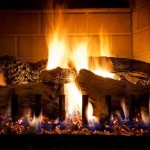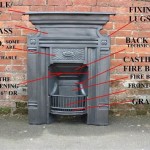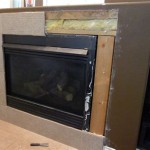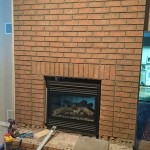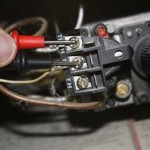Understanding the Significance of a 12-Inch Fireplace Grate
The fireplace grate, a seemingly simple component within a fireplace, plays a crucial role in ensuring efficient combustion and optimal heat output. Choosing the correct size and type of grate is essential for maximizing the functionality and safety of a fireplace. A 12-inch fireplace grate, specifically, is designed for smaller fireplaces, offering a balance between providing adequate airflow and fitting comfortably within the firebox. This article explores the function, considerations, and advantages associated with utilizing a 12-inch fireplace grate.
The primary purpose of a fireplace grate is to elevate firewood off the base of the firebox. This elevation allows air to circulate freely beneath and around the wood, promoting more complete and efficient combustion. Without a grate, wood tends to smolder, producing more smoke and less heat. The increased airflow facilitated by the grate results in a hotter, cleaner burn, reducing creosote buildup in the chimney and improving overall heating efficiency.
A fireplace grate is typically constructed from durable materials like cast iron or steel. These materials are chosen for their ability to withstand the high temperatures generated within a fireplace over extended periods. The construction of the grate is also a key factor in its performance. The spacing between the bars of the grate should be sufficient to allow for adequate airflow, while simultaneously being close enough to prevent smaller pieces of wood from falling through. The height of the grate also plays a role in promoting effective combustion; a slightly elevated grate allows for better airflow underneath the wood pile.
Key Point 1: Optimal Airflow and Combustion
The most significant benefit of using a fireplace grate, particularly a 12-inch model appropriately sized for a smaller fireplace, is the enhancement of airflow. By lifting the firewood off the floor of the firebox, the grate creates a space for air to circulate around and beneath the wood. This increased airflow is critical for several reasons. First, it allows for more complete combustion. With sufficient oxygen supply, the wood burns more efficiently, converting more of its energy into heat rather than smoke and unburnt particles. This results in a hotter fire and a more effective transfer of heat into the room.
Second, enhanced airflow reduces the production of smoke and creosote. Incomplete combustion, which often occurs when wood is burned directly on the firebox floor, generates a significant amount of smoke containing unburnt hydrocarbons and volatile compounds. These compounds can condense in the chimney, forming a sticky substance called creosote. Creosote is highly flammable, and its accumulation poses a serious fire hazard. By promoting more complete combustion, a fireplace grate minimizes the production of smoke and creosote, contributing to a safer fireplace operation.
Third, improved airflow contributes to a cleaner burn. The reduction in smoke and unburnt particles not only benefits the chimney but also improves the air quality within the home. Less smoke entering the room means less particulate matter in the air, reducing potential respiratory irritation and improving overall indoor air quality. A 12-inch grate, when properly fitted, ensures that the airflow is optimized for the size of the firebox, maximizing these benefits.
The design of the grate itself can further enhance airflow. Some grates feature a curved or angled design that promotes better air circulation around the wood. Others may incorporate slots or vents to direct airflow upwards, further improving combustion efficiency. When selecting a 12-inch fireplace grate, consider these design features to ensure optimal airflow and a more efficient burning experience.
Key Point 2: Proper Sizing and Fireplace Compatibility
Choosing the correct size fireplace grate is critical for maximizing its benefits and ensuring the safety of the fireplace. A 12-inch fireplace grate is specifically designed for smaller fireplaces, typically those with a firebox width of around 18 to 24 inches. Using a grate that is too large can obstruct airflow and make it difficult to load and manage the fire. Conversely, a grate that is too small may not provide adequate support for the firewood, leading to inefficient combustion and potential safety hazards.
Before purchasing a 12-inch fireplace grate, it is essential to measure the dimensions of the firebox accurately. Measure the width, depth, and height of the firebox to ensure that the grate will fit comfortably and allow for sufficient clearance around the fire. The grate should not extend too close to the sides or back of the firebox, as this can restrict airflow and potentially damage the fireplace lining. A good rule of thumb is to leave at least a few inches of space between the grate and the walls of the firebox.
Consider the shape of the firebox when selecting a grate. Some fireboxes are rectangular, while others are tapered or curved. Choose a grate that complements the shape of the firebox to ensure optimal airflow and support for the firewood. For example, a curved grate may be more suitable for a firebox with a curved back wall.
Beyond the physical dimensions, consider the overall design and style of the fireplace. A 12-inch fireplace grate should not only fit properly but also complement the aesthetic of the fireplace. Choose a grate with a finish and style that matches the surrounding decor to create a cohesive and visually appealing fireplace setting. Many different styles and finishes are available, ranging from traditional cast iron grates to more modern and minimalist designs.
Key Point 3: Material Durability and Longevity
The material used to construct a fireplace grate is a crucial factor in its durability and longevity. Fireplace grates are subjected to extreme temperatures and constant exposure to burning wood, so it is essential to choose a grate made from a material that can withstand these harsh conditions. The two most common materials used for fireplace grates are cast iron and steel.
Cast iron is a traditional material that is known for its excellent heat resistance and durability. It can withstand high temperatures without warping or cracking, making it an ideal choice for fireplace grates. Cast iron grates also tend to retain heat well, which can help to maintain a consistent fire temperature. However, cast iron can be brittle and prone to cracking if subjected to sudden impacts or temperature changes. It also requires regular maintenance to prevent rusting.
Steel is another popular material for fireplace grates. Steel grates are typically made from welded steel bars, which provide excellent strength and durability. Steel is less brittle than cast iron and is more resistant to cracking and warping. Steel grates are also generally lighter than cast iron grates, making them easier to move and handle. However, steel does not retain heat as well as cast iron and may be more susceptible to corrosion if not properly coated or treated.
When selecting a 12-inch fireplace grate, consider the specific type of steel or cast iron used. High-quality materials and construction techniques will result in a grate that is more durable and long-lasting. Look for grates made from heavy-duty steel or cast iron with thick bars and solid welds. Also, consider the finish of the grate. A protective coating, such as powder coating or high-temperature paint, can help to prevent rusting and corrosion, extending the life of the grate.
Proper maintenance can also significantly extend the lifespan of a fireplace grate. Regularly remove ashes and debris from the grate to prevent them from accumulating and causing corrosion. Periodically inspect the grate for cracks or damage and repair or replace it as needed. By choosing a durable material and providing proper maintenance, a 12-inch fireplace grate can provide years of reliable service.
In addition to cast iron and steel, some fireplace grates are made from stainless steel. Stainless steel offers excellent corrosion resistance and durability, making it a premium option for fireplace grates. While typically more expensive than cast iron or steel grates, stainless steel grates can provide a longer lifespan and require less maintenance.
Ultimately, the best material for a 12-inch fireplace grate depends on individual preferences and budget. Cast iron offers traditional appeal and excellent heat retention, while steel provides strength and durability. Stainless steel offers the best of both worlds, with exceptional corrosion resistance and longevity. Regardless of the material chosen, prioritize quality construction and proper maintenance to ensure a safe and efficient burning experience.
Finally, always ensure the fireplace is inspected annually by a qualified professional to maintain safety and efficiency. Regular chimney cleaning and maintenance are essential for preventing creosote buildup and other potential hazards.

Ofco 12 Inch Round Front Fire Grate Ray Grahams Diy

17 1 2 In X 12 4 3 Universal Fireplace Grate Ac02300 The Home Depot

Vestal J Series 27 Inch Wide X 12 Shallow Depth Fireplace Grate With 2 1 4 Legs

Stool 12 14 16 18 Fireplace Grate

Fireplace Grates For Wood Burning Fireplaces

27 Inch Steel Fireplace Grate 12 Shallow Depth Vestal Hl

12 Inch Fire Grate Stool

Singlyfire Fireplace Grate 30 Inch Heavy Duty Firewood Stove Log Holder Cast Iron Wrought Wood Burning Rack For Indoor Outdoor Chimney Com

Liberty Foundry 17 In Cast Iron Heavy Duty Fireplace Grate With 2 Clearance G17 Bx The Home Depot

18 Inch Steel Fireplace Grate 5 8 Square Bar Vestal Sd
Related Posts

